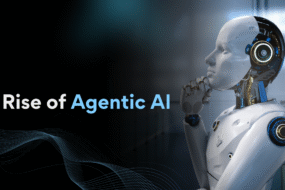
Introduction – Why Nature Is the New Blueprint for Innovation
For decades, science fiction promised us futuristic labs filled with machines that could bend biology to our will. The reality unfolding today looks different—and, in many ways, more profound. Instead of forcing nature to adapt to human needs, modern biotechnology is learning from nature itself, borrowing its designs, and applying them to some of the world’s toughest challenges.
This nature-led revolution isn’t just about cleaner science; it’s about reshaping how industries operate, from healthcare and food to energy and fashion. The global biotech market is already on track to surpass $3.8 trillion by 2030 (Grand View Research, 2025), driven by breakthroughs that move ideas from the lab directly into everyday life.
So what does this shift look like in practice? Let’s explore how biotech is turning natural processes into real-world solutions.
Understanding the Nature-Led Approach in Biotechnology
What Does “Nature-Led” Mean?
At its core, nature-led biotech is about imitating or enhancing natural systems rather than replacing them. Instead of creating synthetic shortcuts, scientists study how cells, proteins, or ecosystems already solve problems—and then scale those solutions.
-
Example: Spider silk is stronger than steel by weight. Biotech firms are producing lab-grown silk proteins to create durable, biodegradable fabrics.
-
Example: Termites digest cellulose thanks to microbes in their guts. Similar enzymes are now being engineered to break down agricultural waste into renewable biofuels.
How This Differs From Traditional Biotechnology
Traditional biotech often meant genetic manipulation in a controlled lab, producing results that worked but sometimes clashed with sustainability. Nature-led biotech focuses on biomimicry and bio-inspiration, making processes both effective and eco-aligned.
Why the Shift Is Happening Now
Advances in Synthetic Biology
Thanks to CRISPR and gene-editing tools, scientists can now precisely tweak DNA to replicate nature’s tricks. This has opened doors for everything from lab-grown meat to engineered microbes that clean up oil spills.
Urgency Around Sustainability
With climate change accelerating, industries are under pressure to cut waste, emissions, and resource use. Nature-led biotech offers scalable, low-carbon alternatives.
Stat: A 2024 PwC survey found that 72% of global CEOs identified biotech as a critical pathway to meeting sustainability targets.
Falling Costs of Biotech Tools
Just as computing costs plummeted over decades, so too have biotech tools. Sequencing DNA, once a billion-dollar effort, now costs under $200. This accessibility fuels rapid experimentation.
Real-World Applications: From Lab to Life
In Healthcare
-
Personalized Medicine: AI and biotech teams are designing therapies based on a patient’s genetic code.
-
Nature-inspired Drugs: Compounds derived from plants, marine organisms, and even fungi are forming the next generation of antibiotics and cancer drugs.
-
Case study: Researchers studying a shark’s immune system developed an experimental treatment that boosts resistance to viral infections (Nature Medicine, 2024).

In Food and Agriculture
-
Lab-Grown Meat: Companies like Upside Foods are scaling meat production without raising animals, cutting greenhouse gases by up to 96% (FAO, 2025).
-
Resilient Crops: Gene-edited seeds are mimicking desert plants’ ability to conserve water, reducing irrigation needs.
-
Microbial Farming: Soil-friendly bacteria replace chemical fertilizers, improving yields while preserving ecosystems.
In Fashion and Materials
-
Biofabricated Leather: Mycelium (the root system of mushrooms) is now being grown into leather-like textiles, adopted by brands like Adidas.
-
Spider-Silk Clothing: Companies are spinning lab-grown silk proteins into ultra-strong, lightweight fabrics.
-
Circular Materials: Enzymes inspired by natural decomposition are helping recycle plastics more efficiently.
In Energy and the Environment
-
Biofuels: Engineered algae turn sunlight and CO₂ into clean fuel.
-
Bioremediation: Microbes are used to absorb heavy metals from contaminated water.
-
Case study: A Canadian startup deployed engineered bacteria at a mining site, cutting toxic runoff by 40% in one year (CleanTech Journal, 2024).
Why This Matters for Human Life and Work
Sustainability Becomes Tangible
This isn’t just theory—nature-led biotech is entering homes, diets, and hospitals. Consumers are already seeing eco-friendly fabrics, plant-based meats, and more natural medical treatments.
Economic Growth
The biotech revolution is creating millions of new jobs in lab work, engineering, and green industries. Cities like Boston, Berlin, and Singapore are becoming global biotech hubs.
Social Impact
Nature-led innovation also addresses global inequalities—offering cheaper drugs, resilient crops for food-insecure regions, and decentralized energy solutions.
Challenges and Ethical Questions
Playing by Nature’s Rules
Engineering living systems comes with risks. If released carelessly, modified microbes could harm ecosystems instead of helping them.
Ethical Dilemmas
Lab-grown organs may one day end transplant shortages, but who gets access first? As with all breakthroughs, equity and regulation lag behind innovation.
Public Perception
Just as early GMOs sparked debate, nature-led biotech faces skepticism. Building trust requires transparency and clear communication.
How to Harness the Biotech Revolution
For Individuals
-
Stay informed: Follow biotech updates through science journals and podcasts.
-
Support eco-friendly products: From mushroom leather sneakers to plant-based proteins.
-
Learn skills: Careers in bioinformatics, genetic editing, and sustainability are growing.
For Businesses
-
Explore partnerships: Collaborating with biotech startups can drive innovation.
-
Audit supply chains: Identify where natural alternatives can cut costs and emissions.
-
Invest in literacy: Train teams to understand biotech’s strengths and limitations.
Looking Ahead – What’s Next in Biotech’s Nature-Led Future
Multi-Industry Integration
Expect crossovers: energy companies using plant biology, healthcare firms relying on marine DNA, and agriculture borrowing from desert ecosystems.
Everyday Presence
By 2035, you may eat lunch grown in a lab, wear clothes spun from proteins, and take medicine sourced from the ocean—all without noticing it’s biotech-powered.
Predictions for the Next Decade
-
$5 trillion biotech market by 2035.
-
Engineered crops that eliminate the need for pesticides.
-
Breakthroughs in regenerative medicine using bio-inspired materials.
Conclusion – From Lab to Life, Guided by Nature
Biotechnology is no longer confined to labs or academic journals. By looking to nature for inspiration, it’s moving directly into our food, fashion, medicine, and energy systems.
The promise is enormous: industries that are both innovative and sustainable, products that improve life without draining the planet, and solutions that feel less like science fiction and more like common sense.
The real challenge now is making sure this revolution is guided responsibly. If we can strike the balance—between bold innovation and respect for natural systems—then biotech’s future won’t just reshape industries. It will help reshape our relationship with the world around us.








No Comments